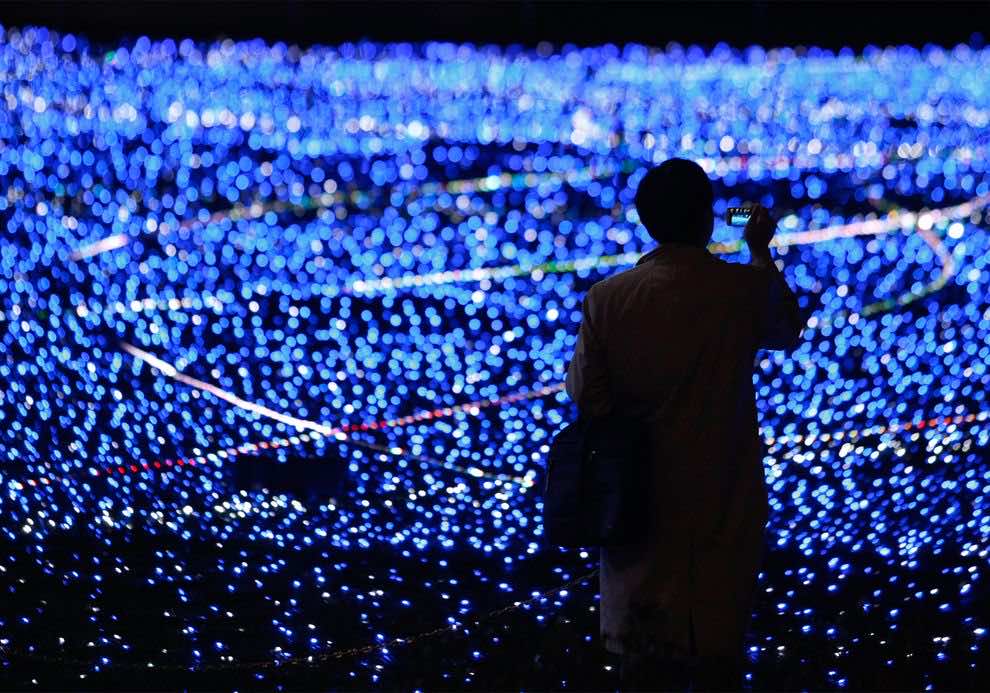Isamu Akasaki and Hiroshi Amano at the University of Nagoya, and Shuji Nakamura working at Nichia Chemicals in Tokushima, Japan have done something that’s more appreciable than the parent discovery of that field. They have invented blue LED, which is the base for modern energy efficient lighting, and are being awarded the 2014 Nobel Prize in Physics for it – something that even Thomas Edison didn’t get upon his invention of light bulb.
The blue LED will serve as the base of modern energy preservation, environmentally friendly light bulbs along with as a range of brand new applications. Even though it was invented in its practical form 20 years ago, the blue LED was long sought after “missing link” of lighting technology, due to which LED lamps were made possible, yet it eluded the scientists and engineers for 30 years.
Variations of lit rag stuck in a bowl of oil have been the lighting system for most of human history, but Swann-Edison changed that with their invention of incandescent bulb in 1879. It was closely followed by the invention of fluorescent light by P.Cooper Hewitt in 1900. Until now lighting technology have been an inefficient and heavy energy consuming process.
LEDs are always understood as modern technology but the first solid state light was developed in 1907 by Harry J Round, and later work on this matter was done in the 1920’s and ‘30s in the Soviet Union, but due to lack of theoretical understanding of the phenomenon used, progress was not seen and it only remained a laboratory curiosity.
Unlike the previous lighting technologies, an LED produces light directly, instead of generating it. It contains a byproduct of heated filaments or ionizing gas, making it a ‘cold’ light by every definition. These LEDs are composed of layers of semiconducting materials and in the most basic form of itself, it consists of an n-layer which has an excess of electrons, and a p-layer, which lacks electrons – that is, it contains a lot of positive holes. In between these layers is an active layer. When current passes, the electrons and holes combine and cancel each other out and generate light. The wavelength and color of the light is solely based on which materials are being used.
Red LEDs were invented in 1950’s due to the invention of transistors and better understanding of semiconductor theory. These were used as indicator light, calculator and digital watch displays. Green LED’s, laser and infrared LEDs were invented by the end of 1960’s. LEDs became the next big thing after being thought of as the future of domestic lighting and magazines predicting that by 1980, homes will be lit by LED panels.
The prediction turned out to be false and the promise was delayed, because along with red and green LEDs, blue was needed as well to create bright, clean, white light. Blue LED was much harder to produce as compared to the other two. The blue LED was needed to work in combination with the red and green LEDs to create white light. The work needed to develop the blue LED consisted of a long series of breakthroughs in basic materials physics and crystal growing.
Let’s look at the statistical data to better help you realize why this is so important. LED lamps produce light at 300 lumens per watt (lm/W) while the traditional incandescent bulb give out light at 16 lm/W and fluorescents do this at 70 lm/W. The LED lasers are used in Blu-ray players while ultraviolet LEDs are employed in the sterilizing bottled water to fight the Ebola virus. Looking at the life of LED vs incandescent bulbs, an LED will last for 100,000 hours as opposed to the 1,000 hour life of the contender.

